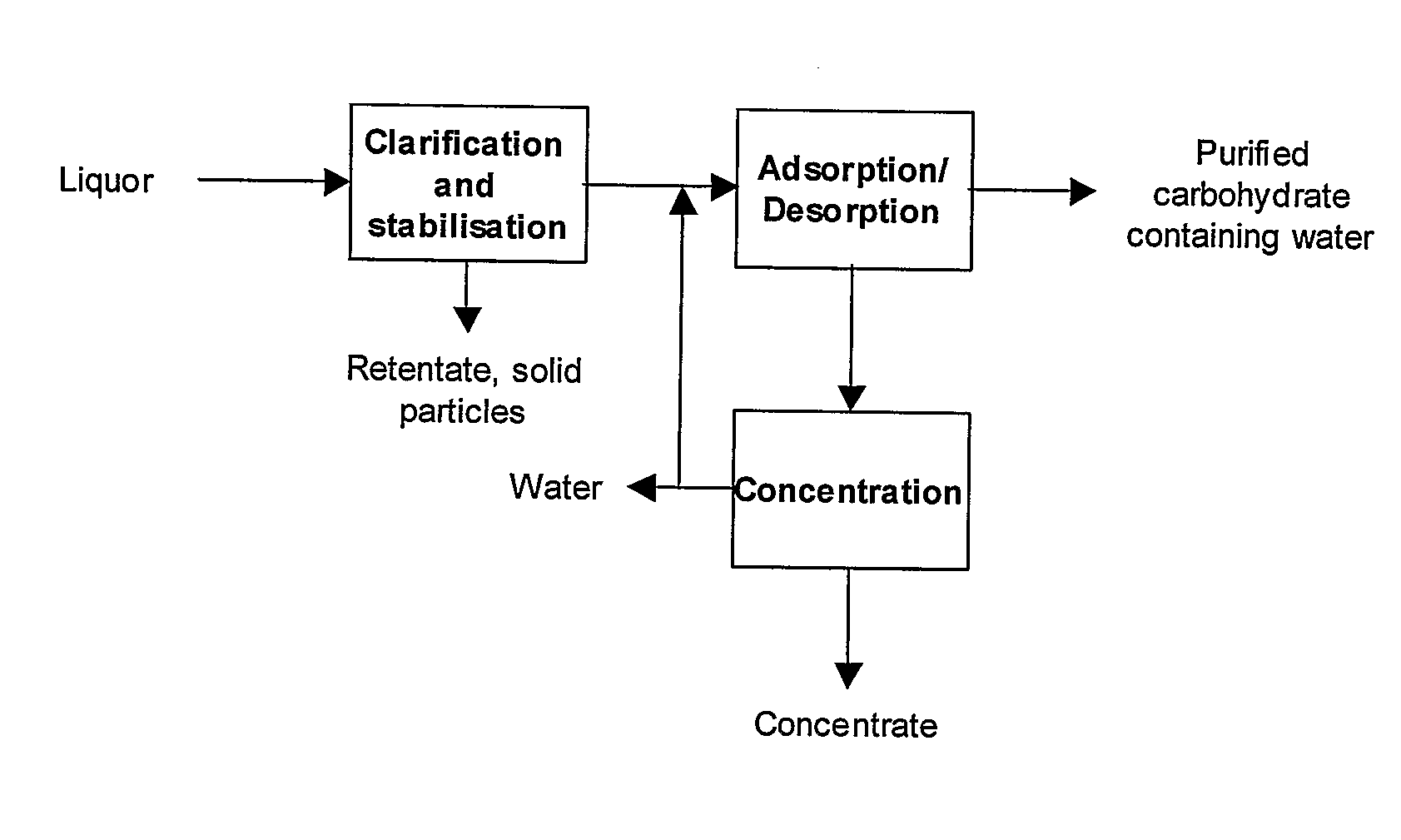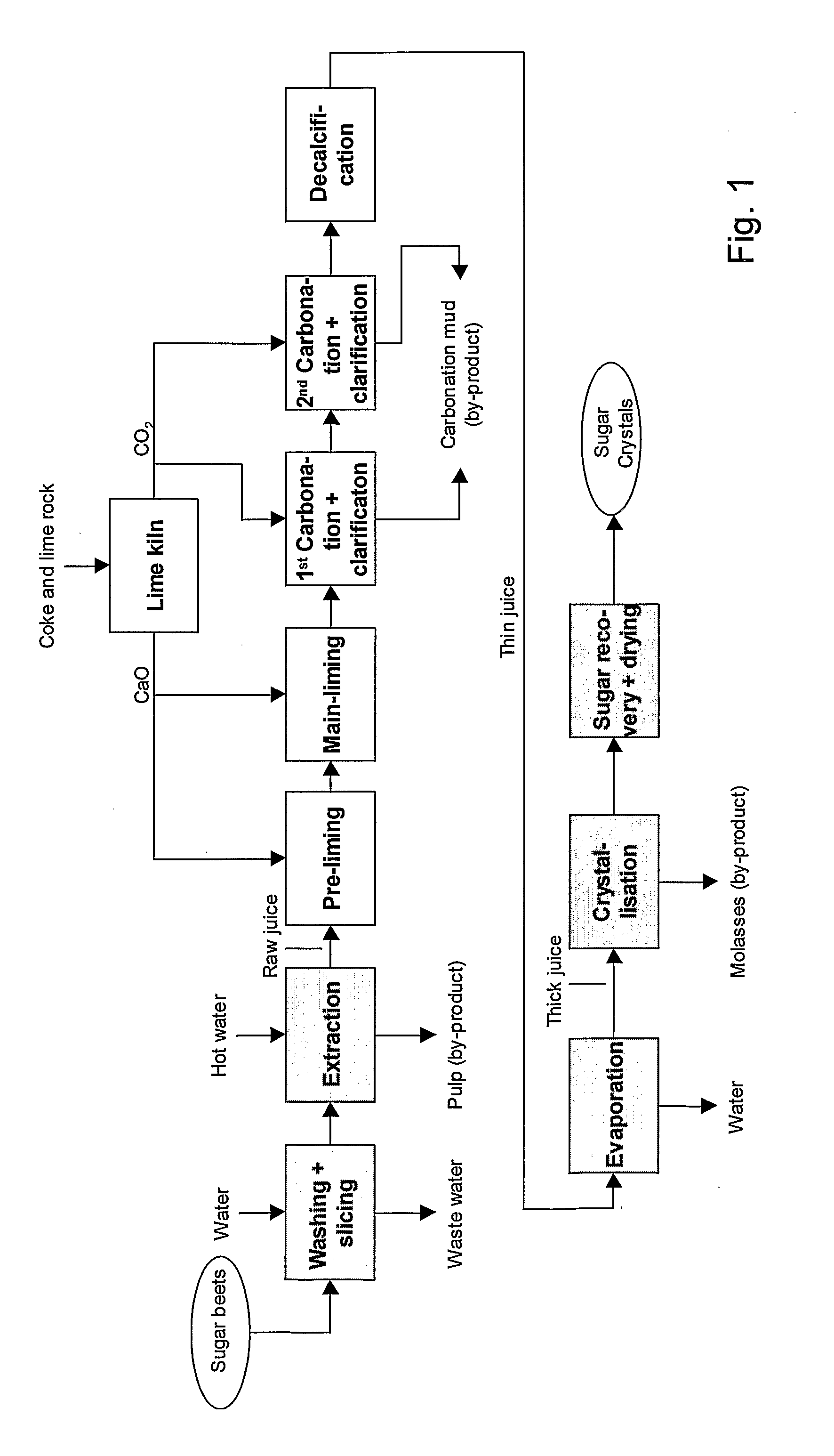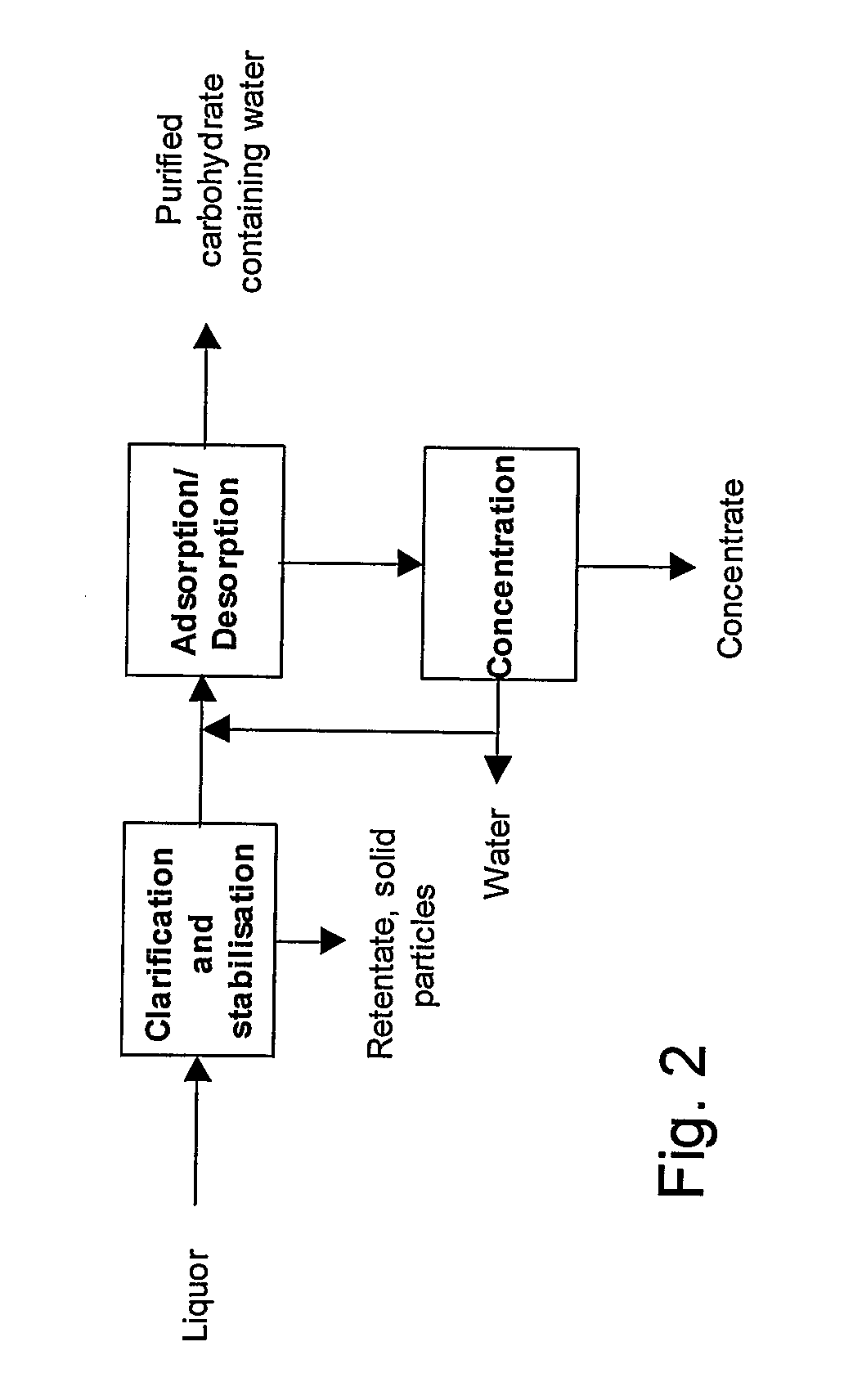Method of Extracting Sugar from Sugar Juice
- Summary
- Abstract
- Description
- Claims
- Application Information
AI Technical Summary
Benefits of technology
Problems solved by technology
Method used
Image
Examples
example 1
[0102]A laboratory sized adsorption / desorption column (internal diameter 2.6 cm, length 0.40 m, bed height 0.23 m) was packed with Amberchrom CG-161, a porous polystyrene adsorbent. The column was equipped with a water jacket for temperature control. The column was fed with degassed 136.1 gram per litre aqueous sucrose solution. The temperature of the feed and the column was 35° C. during the adsorption phase. The effluent of the column was collected with a fraction collector and analysed by refractometry. After feeding the column with several bed volumes sucrose solution, the flow was stopped and, to perform the desorption phase, the column was heated to 95° C. and eluted with 3 bed volumes water at 95° C. The results are summarised in Table 1.
TABLE 1ConcentrationSucrose concentration feed136.1 g / LSucrose concentration desorption143.6 g / LliquidRelative concentration (extract versus105.5%feed)Mass balanceSucrose load column (g)15.7Desorption sucrose (g)15.0Sucrose recovery (extract ...
example 2
[0104]The same adsorption / desorption column as in example 1 was fed with the permeate of microfiltrated (pore diameter 0.1 μm) raw sugar juice tapped from a beet sugar refinery. The temperature of the feed and the column was 35° C. during the adsorption phase. The effluent of the column was collected with a fraction collector and analysed by HPLC. After feeding the column with several bed volumes microfiltrated raw juice permeate, the flow was stopped and, to perform collection of the sucrose by desorption, the column was heated to 95° C. and eluted with 3 bed volumes water at 95° C. The results for sucrose are summarised in Table 2 and the breakthrough times of sugar juice components relative to the breakthrough time of sucrose in Table 3.
TABLE 2ConcentrationSucrose concentration feed142.0 g / LSucrose concentration desorption147.4 g / LliquidRelative concentration (extract versus103.8%feed)Mass balanceSucrose load column (g)16.8Desorption sucrose (g)15.5Sucrose recovery (extract versu...
PUM
| Property | Measurement | Unit |
|---|---|---|
| Length | aaaaa | aaaaa |
| Length | aaaaa | aaaaa |
| Length | aaaaa | aaaaa |
Abstract
Description
Claims
Application Information
 Login to View More
Login to View More - R&D
- Intellectual Property
- Life Sciences
- Materials
- Tech Scout
- Unparalleled Data Quality
- Higher Quality Content
- 60% Fewer Hallucinations
Browse by: Latest US Patents, China's latest patents, Technical Efficacy Thesaurus, Application Domain, Technology Topic, Popular Technical Reports.
© 2025 PatSnap. All rights reserved.Legal|Privacy policy|Modern Slavery Act Transparency Statement|Sitemap|About US| Contact US: help@patsnap.com



